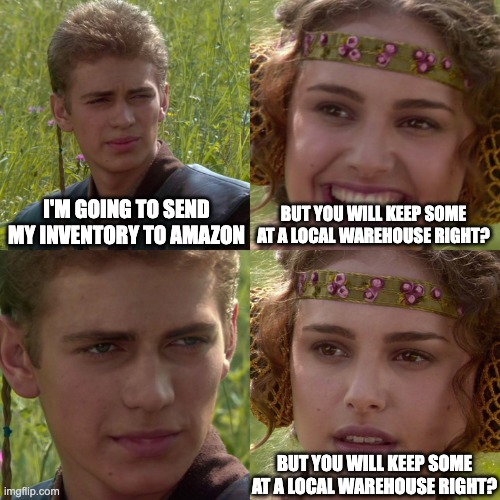
Remember the good old days? Pre-COVID, pre-Amazon restocking limits, pre-TikTok dance videos? Ah, nostalgia! Back then, you, the local hero of FBA selling, could just dial up your supplier, stockpile your bounty straight into an Amazon FBA warehouse, and call it a day. As they say, all good things come to an end!
Let’s dive into why this old-school strategy has lost its magic touch:
- Challenged Supply Chains: The COVID-19 crisis significantly strained global supply chains, leading to shipments from China to the U.S. taking up to 90 days. Ports were overwhelmed, ships were queued for berths, and there was a noticeable lack of workers. Although the situation has somewhat normalized, occasional disruptions still occur. Smart sellers maintain a surplus of supply on hand.
- Amazon Restock Limits: In July 2020, Amazon threw a curveball by introducing restocking limits. These were as delicately calibrated as a sledgehammer, disregarding the type of business and product, and only considered unit numbers. Sure, things have improved, but Q4 still feels like walking through a haunted house in the dark. Here’s a funny paradox: Amazon suggests an inventory number to send, yet sets a restock limit usually lower than its recommendation. If you run out of stock, your IPI score takes a nosedive, and you lose sales.
- Quality Control with New Suppliers: When initiating business with a new supplier, it’s crucial to thoroughly inspect the first shipment. Despite receiving a satisfactory sample, you can’t gauge the quality of a full batch or the packaging standards without a hands-on review. If you ship directly to Amazon without a personal check, you risk receiving negative reviews due to unforeseen issues, which could damage a product’s reputation before it gains any traction.
So, what’s the knight in shining armor here? A local warehouse. No, it doesn’t have to be a skyscraper; it could be your garage, a spare room, or even a magical wardrobe (Narnia not included). The advantages? You’re the boss—you can check your inventory’s quality, quantity, and maintain a buffer. With your local fortress, you can send inventory to Amazon strategically, manage customer replacements, and have a secret weapon for Q4’s restocking limits.

Of course, every knight needs a trusty steed. Enter Stockt, the software that’s like your inventory’s personal assistant. With your local warehouse and Stockt’s inventory management features, you’ll get a bird’s-eye view of your inventory kingdom. This helps you decide how much to order, factoring in both local and remote warehouses. Stockt is also your fortune teller, predicting when it’s time to transfer stock from your local warehouse to Amazon and even aiding in managing those pesky restocking limits. There is a even a built in restock limit tool, for shipments.
In conclusion, local warehouses are the secret sauce to stay stocked, tackle demand like a ninja, survive Q4’s restocking limits, and keep quality control on point. With a powerful sidekick like Stockt, you’re all set to conquer your inventory woes. Give Stockt’s 30-day free trial a whirl to see how it can supercharge your operations.